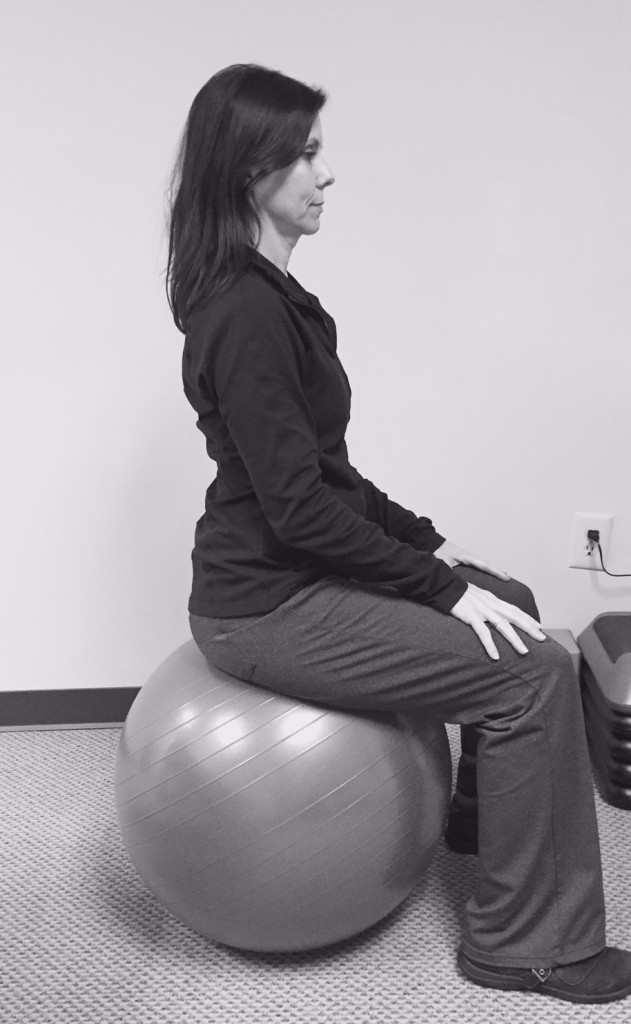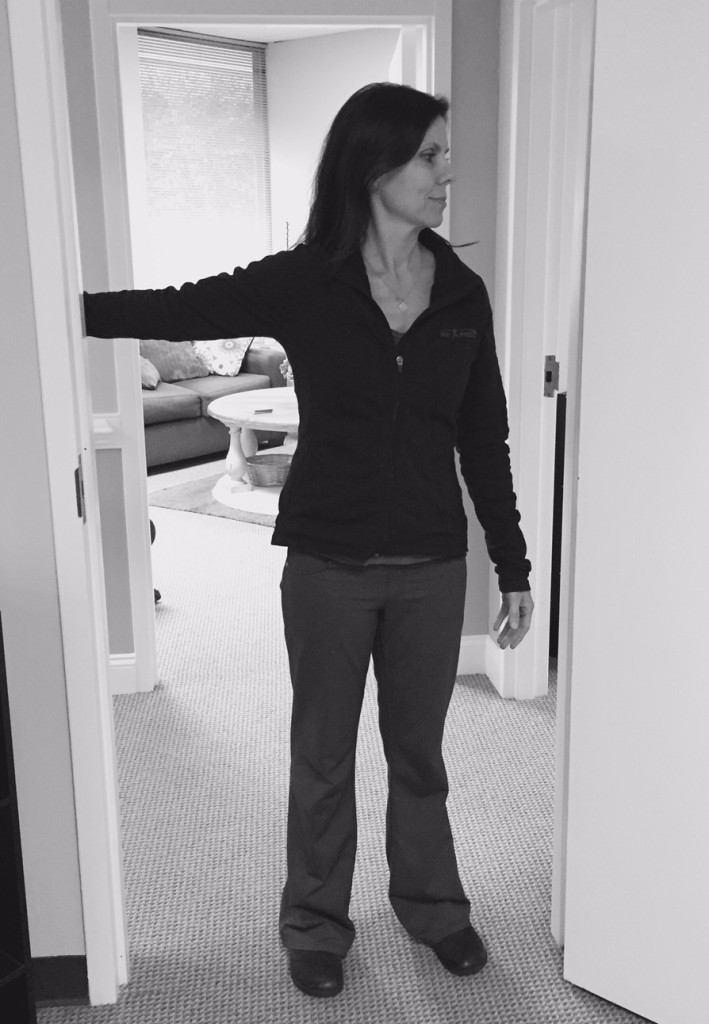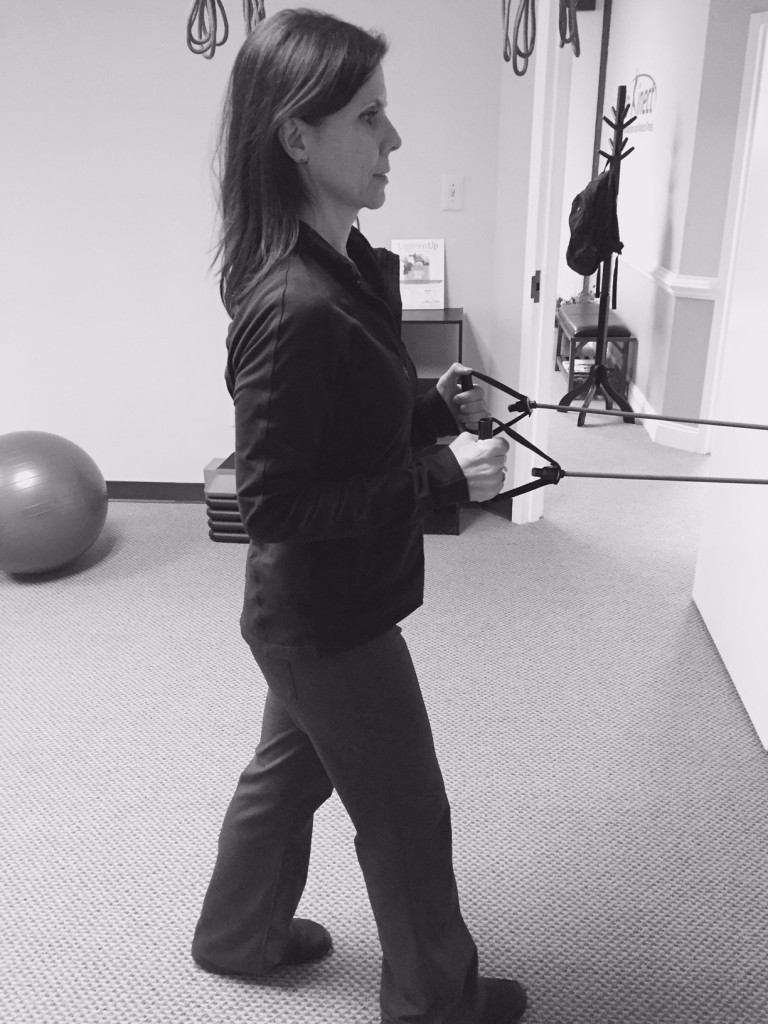 “Sit up straight!” was a mantra I heard throughout my young life. As a young equestrienne, I had riding instructors as well as both my parents reinforcing this message on a daily basis. As annoying as it was then, there are many days I wish I still had those daily reminders. Modern life is full of sit or stand-still moments that require our full mental engagement. This typically turns off the physical engagement, or awareness of the physical body. Further, this engagement is usually heavy on the visual, which means we work to focus our eyes on something—usually a screen, be it computer, tablet or phone. The body, attempting to do as the brain requests, slides the head forward on the neck, and rounds the shoulders, pushing the head and eyes closer to the screen. So now you may see the screen a little better, but sooner or later your neck, and likely your back, will start to hurt. Days, weeks, and months of this go by and before you know it, your postural habits have been altered.
“Sit up straight!” was a mantra I heard throughout my young life. As a young equestrienne, I had riding instructors as well as both my parents reinforcing this message on a daily basis. As annoying as it was then, there are many days I wish I still had those daily reminders. Modern life is full of sit or stand-still moments that require our full mental engagement. This typically turns off the physical engagement, or awareness of the physical body. Further, this engagement is usually heavy on the visual, which means we work to focus our eyes on something—usually a screen, be it computer, tablet or phone. The body, attempting to do as the brain requests, slides the head forward on the neck, and rounds the shoulders, pushing the head and eyes closer to the screen. So now you may see the screen a little better, but sooner or later your neck, and likely your back, will start to hurt. Days, weeks, and months of this go by and before you know it, your postural habits have been altered.
The description above is not the only way posture can go awry, but it is very common. Regardless of your postural challenge, understanding the building blocks of good posture should help you begin to curb old habits and build newer more healthful ones. A good metaphor for posture is stacked building blocks. When blocks are misaligned, the “tower” of the body becomes wobblier. In your body, the wobbliness leads to muscle imbalance as the body tries to give you stability. Some muscles crank down to hold you up, while their opposites must become elongated and “shut down” to allow the new “stability strategy” to work. This leads to altered movement patterns as the body must continue to perform your daily activities, regardless of how vigorous or mundane those activities may be. As the body continues to adapt away from pain and discomfort, the muscle imbalances worsen, until you end up in pain or even injured.
The good news is, it’s never too late to improve your posture. Even if you know you won’t be as tall and straight as you were in your twenties, some improvement will go a long way to avoiding future pain and injury.
The exercises: It’s important to remember that the body moves, not in pieces and parts, but as an integrated system, with each part impacting the next. With that context in mind, let’s look at 3 exercises to work on improving your head and neck alignment this month.
- Chin Glides- Seated:
- Sit tall on the edge of a seat with weight in your feet. Reach the head away from the shoulders as you glide the chin back over the collar bones. You may tip the chin down slightly as well. Practice 2-3 sets of 10 throughout the day or as needed to realign your head and neck.
- Straight Arm Chest/ Shoulder Stretch:
Stand just in front of the doorway (toward the middle of the doorway, with the right arm straight and horizontal at shoulder level.) Your wrist should be against the door jamb. Turn your head to the left for the stretch. If you need more, start to rotate your shoulders left until you feel the stretch. Hold this position for 30 seconds. Repeat on the other side.
3. Bent arm shoulder retraction:
Stand with feet staggered and a light band anchored at chest level. The band should have no slack in it as you stand with arms bent at right angles. Exhale to squeeze the shoulder blades toward each other without arching the back or popping the ribs (it’s a very small motion.) Inhale to return to start position. Mind your head and neck position during this exercise. Practice 2 sets of 10.
Postural challenges may be a big part of modern life, but we don’t have to give into them. There are many schools of thought on how to improve your posture and even more exercises to get you there. Hopefully, this article has given you some tactics to get started on the head and neck.
For more information on how to improve your posture, please contact us at [email protected]. And be sure to attend the posture workshop I will be presenting with Clarke Tanner, PT at Partner MD on October 20!
I would love to hear about YOUR challenges with posture- post YOUR biggest postural challenge and I will choose a few to be the theme for my NEXT article.


